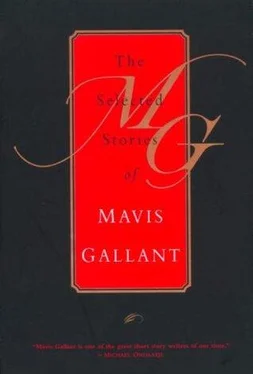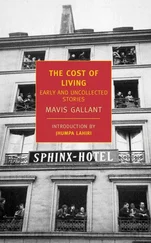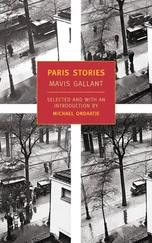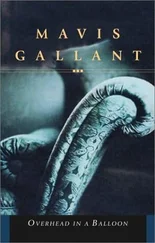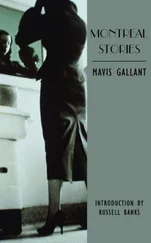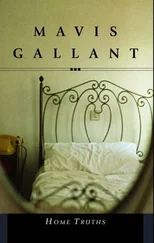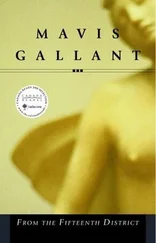“It isn’t fair,” said Luc.
“Then you and your mother share my share.”
“How much of yours is mine?” said Luc politely.
“Oh, something at least the size of the tennis court,” said Roger.
On Luc’s desk stood, silver-framed, another picture of Simone, a charming one taken at the time of her engagement. She wore, already, the gold earrings. Her hair was in the upswept balloon style of the time. Her expression was smiling, confident but untried. Both Luc and Roger suddenly looked at it in silence.
It was Simone’s belief that, after Katia, Luc had started sleeping with one of her own friends. She thought she knew the one: the Hungarian wife of an architect, fond of saying she wished she had a daughter the right age for Luc. This was a direct sexual compliment, based on experience, Simone thought. Roger thought it meant nothing at all. It was the kind of empty declaration mothers mistook for appreciation. Simone had asked Roger to find out what he could, for this was the last chance either of them would ever have to talk to Luc. From now on, he would undoubtedly get along better with his parents, but where there had been a fence there would be a wall. Luc was on his own.
Roger said, “It was often thought, in my day, mainly by foreigners who had never been to France, that young men began their lives with their mother’s best friend. Absurd, when you consider it. Why pick an old woman when you can have a young one?” “Buy a young one,” he had been about to say, by mistake. “Your mother’s friends often seem young to me. I suppose it has to do with their clothes — so loose, unbuttoned. The disorder is already there. My mother’s best friends wore armor. It was called the New Look, invented by Christian Dior, a great defender of matronly virtue.” A direct glance from Luc — the first. “There really was a Mr. Dior, just as I suppose there was a Mr. Mercedes and a Mr. Benz. My mother and her friends were put into boned corsets, stiff petticoats, wide-brimmed, murderous hats. Their nails were pointed, and as red as your lampshade. They carried furled parasols with silver handles and metal-edged handbags. Even the heels of their shoes were contrived for braining people. No young man would have gone anywhere near.” Luc’s eyes met Roger’s in the window. “I have often wondered,” said Roger, “though I’m not trying to make it my business, what you and Katia could have done. Where could you have taken her? Well, unless she had some private place of her own. There’s more and more of that. Daughters of nice couples, people we know. Their own apartment, car, money. Holidays no one knows where. Credit cards, bank accounts, abortions. In my day, we had a miserable amount of spending money, but we had the girls in the Rue Spontini. Long after the bordellos were closed, there was the Rue Spontini. Do you know who first took me there? Cousin Henri. Not surprising, considering the life he has led since. Henri called it ‘the annex,’ because he ran into so many friends from his school. On Thursday afternoons, that was.” A slight question in Luc’s eyes. “Thursday was our weekly holiday, like Wednesdays for you. I don’t suppose every Wednesday — no, I’m sure you don’t. Besides, even the last of those places vanished years ago. There were Belgian girls, Spanish girls from Algeria. Some were so young — oh, very young. One told me I was like a brother. I asked Cousin Henri what she meant. He said he didn’t know.”
Luc said, “Katia could cry whenever she wanted to.” Her face never altered, but two great tears would suddenly brim over and course along her cheeks.
The curtains and shutters were open. Anyone could look in. There was no one in the street — not even a ghost. How real Katia and Luc had seemed; how they had touched what was left of Roger’s heart; how he had loved them. Giving them up forever, he said, “I always admired that picture of your mother.”
Simone and Roger had become engaged while Roger was still a lieutenant in Algeria. On the night before their wedding, which was to take place at ten o’clock in the morning in the church of Saint-Pierre de Chaillot, Roger paid a wholly unwelcome call. Simone received him alone, in her dressing gown, wearing a fine net over her carefully ballooned hair. Her parents, listening at the door, took it for granted Roger had caught a venereal disease in a North African brothel and wanted the wedding postponed; Simone supposed he had met a richer and prettier girl. All Roger had to say was that he had seen an Algerian prisoner being tortured to death. Simone had often asked Roger, since then, why he had tried to frighten her with something that had so little bearing on their future. Roger could not remember what his reason had been.
He tried, now, to think of something important to say to Luc, as if the essence of his own life could be bottled in words and handed over. Sylvestre, wakened by a familiar voice, came snuffling at the door, expecting at this unsuitable hour to be taken out. Roger remarked, “Whatever happens, don’t get your life all mixed up with a dog’s.”

A ymeric had a family name that Walter at first didn’t catch. He had come into the art gallery as “A. Régis,” which was how he signed his work. He must have been close to sixty, but only his self-confidence had kept pace with time. His eyes shone, young and expectant, in an unlined and rosy face. In spite of the face, almost downy, he was powerful-looking, with a wrestler’s thrust of neck and hunched shoulders. Walter, assistant manager of the gallery, was immediately attracted to Aymeric, as to a new religion — this time, one that might work.
Painting portraits on commission had seen Aymeric through the sunnier decades, but there were fewer clients now, at least in Europe. After a brief late flowering of Moroccan princes and Pakistani generals, he had given up. Now he painted country houses. Usually he showed the front with the white shutters and all the ivy, and a stretch of lawn with white chairs and a teapot and cups, and some scattered pages of Le Figaro —the only newspaper, often the only anything, his patrons read. He had a hairline touch and could reproduce Le Figaro’s social calendar, in which he cleverly embedded his client’s name and his own. Some patrons kept a large magnifying glass on a table under the picture, so that guests, peering respectfully, could appreciate their host’s permanent place in art.
Unfortunately, such commissions never amounted to much. These were not the great homes of France (they had all been done long ago, and in times of uncertainty and anxious thrift the heirs and owners were not of a mind to start over) but weekend places. Aymeric was called in to immortalize a done-up village bakery, a barn refurbished and brightened with the yellow awnings Dallas had lately made so popular. They were not houses meant to be handed on but slabs of Paris-area real estate, to be sold and sold again, each time with a thicker garnish of improvements. Aymeric had by now worked his territory to the farthest limit of the farthest flagged terrace within a two-hour drive from Paris in any direction; it had occurred to him that a show, a sort of retrospective of lawns and Figaros , would bring fresh patronage, perhaps even from abroad. (As Walter was to discover, Aymeric was blankly unprofessional, with that ignorance of the trade peculiar to its fringe.) It happened that one of the Paris Sunday supplements had published a picture story on Walter’s gallery, with captions that laid stress on the establishment’s boldness, vitality, visibility, international connections, and financial vigor. The supplement project had cost Walter’s employer a packet, and Walter was not surprised that one of the photographs showed him close to collapse, leaning for support against the wall safe in his private office. The accompanying article described mobbed openings, private viewings to which the police were summoned to keep order, and potential buyers lined up outside in below-freezing weather, bursting in the minute the doors were opened to grab everything off the walls. The name of the painter hardly mattered; the gallery’s reputation was enough.
Читать дальше
